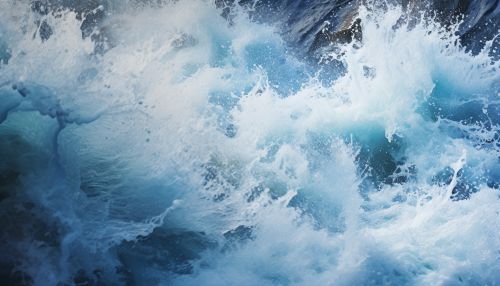Turbulence in Fluid Dynamics
Introduction
Turbulence in fluid dynamics is a complex phenomenon that has been the subject of intense study for over a century. It is characterized by chaotic, unpredictable, and irregular fluctuations in the flow of a fluid, such as water or air. Despite its complexity, understanding turbulence is crucial in various fields such as meteorology, oceanography, aeronautics, and engineering.
Fundamental Concepts
Turbulence is fundamentally a non-linear process, which means that it cannot be described by simple equations. It involves a wide range of spatial and temporal scales, and it is inherently three-dimensional and time-dependent. The study of turbulence is based on the Navier-Stokes equations, which are the fundamental equations of fluid dynamics. These equations describe the motion of viscous fluid substances.
Characteristics of Turbulence
Turbulence is characterized by several key features. These include:
- Irregularity: Turbulence is inherently random and unpredictable. It does not exhibit any regular patterns or periodicity.
- Diffusivity: Turbulence enhances the mixing and diffusion of substances within a fluid. This is why smoke from a chimney, for example, disperses rapidly in a turbulent wind.
- Dissipation: Turbulent flows convert kinetic energy into internal energy through viscous friction, which results in a loss of energy, or dissipation.
- Vorticity: Turbulence is associated with vortices, or swirling flows. These vortices interact with each other in a complex manner, leading to the characteristic chaotic behavior of turbulence.


The Onset of Turbulence
The transition from laminar (smooth) flow to turbulent flow is a complex process that depends on several factors. These include the Reynolds number, which is a dimensionless quantity that describes the ratio of inertial forces to viscous forces in a fluid. When the Reynolds number exceeds a certain critical value, the flow becomes unstable and transitions to turbulence. This process is known as the Reynolds transition.
Turbulence Models
There are several mathematical models used to describe and predict turbulent flows. These include:
- Direct Numerical Simulation (DNS): This is the most accurate method, but it is also the most computationally intensive. It involves solving the Navier-Stokes equations directly for all relevant scales of motion.
- Large Eddy Simulation (LES): This method involves simulating only the large-scale structures in the flow, while the effects of the smaller scales are modeled.
- Reynolds-Averaged Navier-Stokes (RANS) equations: This is the most commonly used method in engineering applications. It involves averaging the Navier-Stokes equations over time to obtain a set of equations that describe the mean flow.
Applications of Turbulence
Understanding turbulence is crucial in many fields. For example, in meteorology, turbulence plays a key role in the transport and mixing of heat, moisture, and pollutants in the atmosphere. In aeronautics, turbulence can cause buffeting and other adverse effects on aircraft. In engineering, turbulence affects the performance of many devices and systems, such as pumps, turbines, and heat exchangers.
